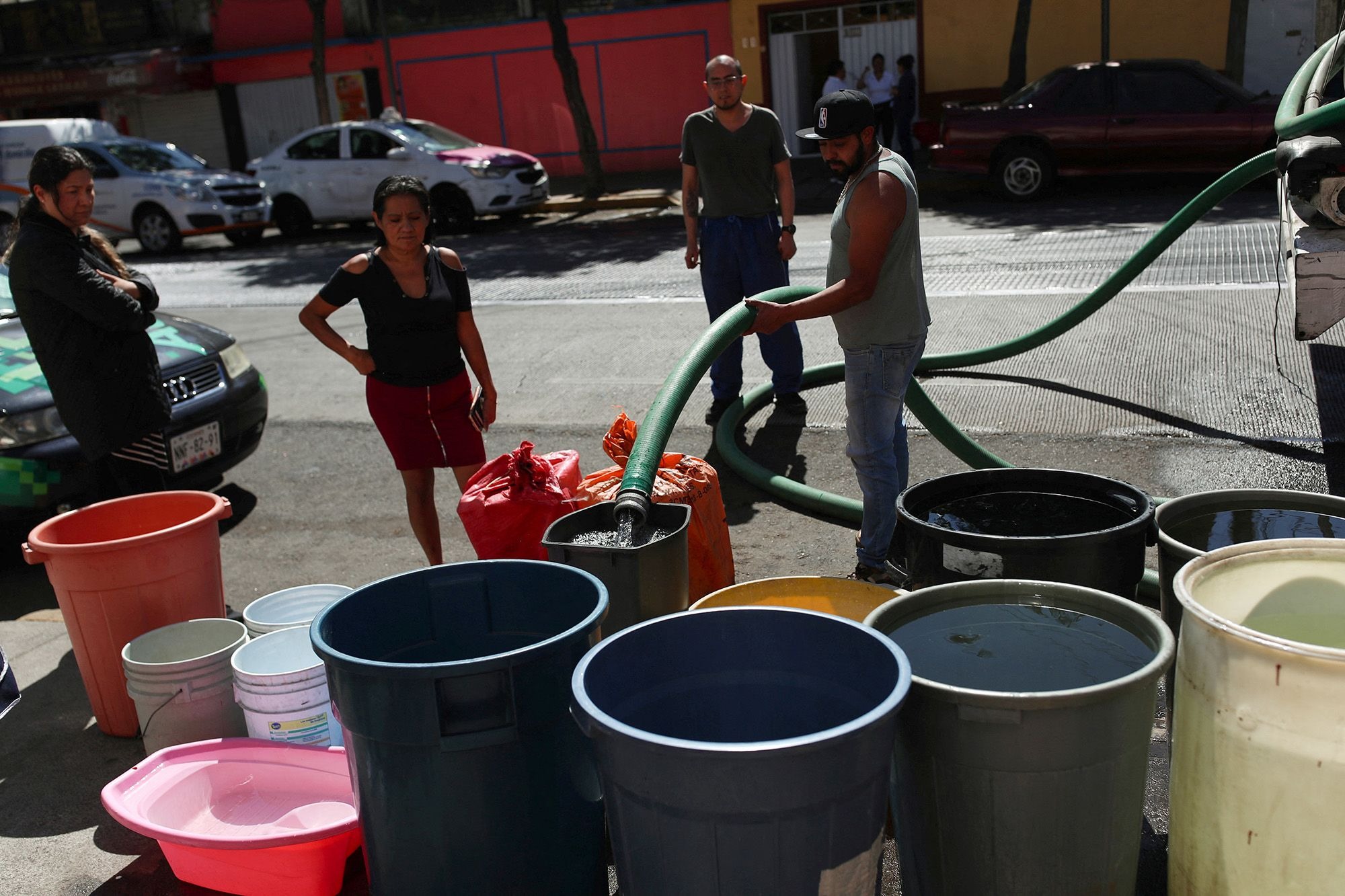Mexico City, the most populous city in North America, is grappling with a severe water crisis due to an enduring drought and years of low rainfall, intensifying the strain on the already overburdened water supply system.
With a population exceeding 21 million, residents in the Mexico City metropolitan area have been facing weeks of water shortages, leading local authorities to implement rationing measures as reservoir levels reach historic lows.
The crisis has prompted residents like Olga González to adopt water-saving measures, including recycling water from showers and washing machines for use in toilets.

Water Scarcity in Mexico City (Credits: Reuters)
The situation has compelled some residents to purchase drinking water from stores, as the city’s supplied water is deemed too dirty and chlorinated for consumption. In various districts, such as Tlalpan, residents like Nancy Cabrera Cepeda report receiving water supply only once a week.
The scarcity of water has become a recurring issue in Mexico City, exacerbated by poorly planned urban development, inadequate infrastructure, and the region’s unique history and geography. Ongoing challenges have been magnified by recent droughts linked to climate change.
Dario Solano-Rojas, an associate professor at the National Autonomous University of Mexico, highlights the longstanding issues tied to the city’s complex relationship with water.
Mexico City, built on a former lake bed drained in the 16th century, relies heavily on pumping underground aquifers and managing a network of canals, dams, and reservoirs known as the Cutzamala System.
The city extracts approximately 70% of its water from underground sources, while the remaining 30% comes from the Cutzamala System. However, the over-extraction of groundwater is causing the city to sink at a rate of about 20 inches per year, leading to subsidence.
The rapid expansion of the city exacerbates stress on underground aquifers, and climate change compounds the crisis by contributing to ongoing drought conditions.
Solano-Rojas emphasizes that Mexico City’s infrastructure has not kept pace with its growth, requiring urgent repairs and replacements.
The effects of climate change, including warmer temperatures and reduced precipitation, further limit opportunities to replenish aquifers and dams. The region struggles to respond effectively to the rapidly intensifying water crisis.
Many neighborhoods, particularly Iztapalapa, with nearly 2 million residents requiring 100 million cubic meters of water annually, experience acute water scarcity.
Frustrations over the situation have led to protests, as witnessed in January when demonstrators in Acambay forcibly entered an office of Mexico’s National Water Commission. Local authorities are urging residents to conserve water and prioritize drinking water amid rising temperatures.
Residents like Estela Hernández Villa in Iztapalapa express the daily sacrifices imposed by the shortage, such as minimizing clothes washing and using water containers for bathing.
The precarious water situation underscores the urgent need for comprehensive solutions to address the complex and interrelated challenges facing Mexico City’s water supply.























